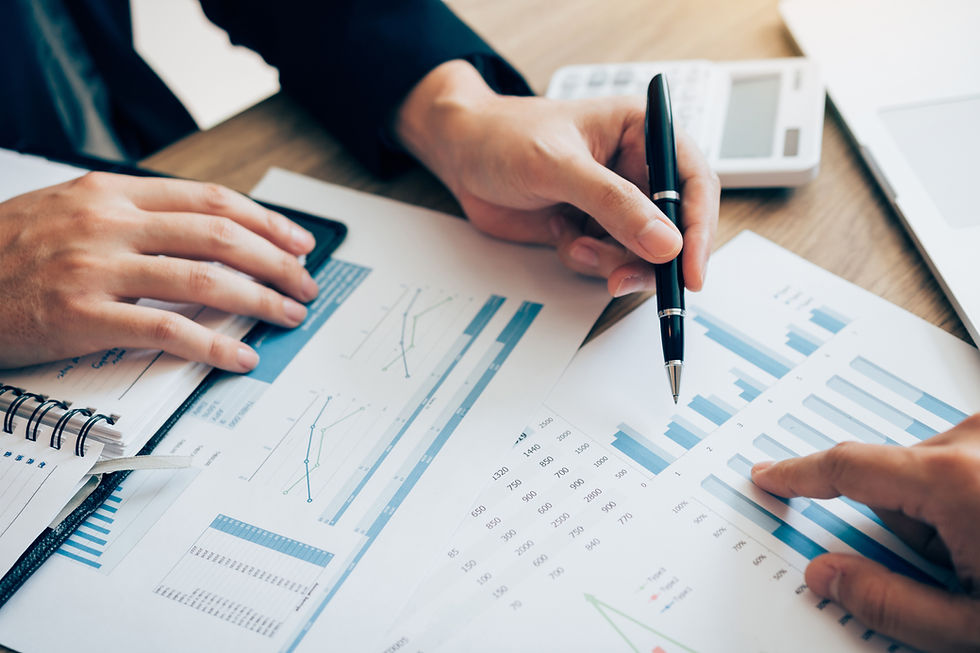How to Save for a Down Payment on a House
- Rolf Issler

- Sep 17, 2022
- 4 min read
Updated: Sep 17, 2023
Buying a house can be both terrifying and exciting at the same time. It's likely the biggest financial decision you'll ever make, so you should take it seriously.
In a recent survey, the Canadian Real Estate Board found that 86 percent of Canadian millennials said they hope to own a home someday, and 63 percent think buying property is becoming more difficult every year.
The biggest challenge is getting the funds — and the nerve — for the down payment on a house. Here's how to build up your down payment, so you're ready when the opportunity knocks.
What is a Down Payment?
The down payment is money that you've saved that you'll put toward buying your new home. It's your commitment to the purchase, and the rest of the purchase price will be covered by a mortgage loan that you'll pay back over time, typically 25 years.
The down payment is your way of telling lenders that you're committed and disciplined with your money, and you're ready to put it on the table up front.
How much of a down payment you need will depend on how much you pay for your home. In Canada, for homes less than $500,000, the minimum down payment is 5 percent of the purchase price. For homes between $500,000 and $999,999, your minimum down is 5 percent of the first $500,000, then 10 percent of the rest. If you buy a house for more than $1 million you'll need at least 20 percent down.
In all cases, if you have less than 20% down, there's the added cost of mortgage insurance, which protects your lender in case you can't pay back your loan. The additional cost is added to your mortgage, and you'll pay that back over the life of the mortgage. It's an additional cost that some people don't consider. When budgeting for a mortgage payment.
On the flip side, a bigger downpayment upfront will reduce your total debt and monthly payments too.
How to Save for a Down Payment
Now that you understand what a downpayment is, here are three things you can start doing right now.
1. Set Your Target Date
Make your timeline. Set your goal for when you want to buy your home, and how much of a down payment you'll need.
This all depends on your current financial situation, and you might need some help setting these goals. If you haven't started saving yet, and want to buy a million-dollar house, it might be some time before you've saved enough for the down payment.
2. Set Your Budget
Now take your down payment and divide it by the number of months before you plan to purchase your home. That's how much you need to save each month to reach your goal by your target date.
For example, if you have your eye on buying a $500,000 home, then you'll need 10% down, or $50,000.
$50,000 divided by 12 is about $4200 a month. Yikes!
$50,000 divided by 24 is about $2100 a month. Better, but still yikes!
$50,000 divided by 36 is about $1400 a month... you get the idea.
3. Start Saving
Start a savings account that's solely for your down payment. No debit card access, preferably at another institution so that you're not tempted to dip into those savings for something else. You can arrange with your bank to have the money automatically moved from your chequing into your savings on the same day every month.
4. Know Your Government Perks
Most provinces, in Canada, have programs to help first-time homebuyers, but one program that is common across the country is the Home Buyer's Plan (HBP).
The HBP allows first-time homebuyers to withdraw up to $35,000 from their Registered Retirement Savings Plan (RRSP) tax-free. Then you have 15 years to repay that money into your RRSP, starting in the second year after you buy your house.
For example, if you buy a home in 2022, you won't need to begin repaying until 2024. To qualify for the HBP you haven't owned a home in the last five years.
You can also transfer your savings into an RRSP, and as long as it stays there for 90 days, you can use it to qualify for the HBP. The advantage of doing this is that you will get a tax refund for your RRSP contribution, and that refund can then be added to the down payment. You will want to get the help of an advisor to get this set up properly so that you don't end up paying penalties or taxes for improper withdrawals.
Other programs include:
The First-Time Home Buyers' Tax Credit (HBTC) gives first-time buyers a nonrefundable tax credit of up to $750 to recover expenses for legal fees, inspections, and other closing costs.
For newly built homes, the GST/HST New Housing Rebate gives qualified Canadians a way to recover some of the goods and services tax (GST) or the federal part of the harmonized sales tax (HST) that you paid.
Some provinces offer rebates for the provincial part of the HST or GST.
These programs can all help put some money back in your pocket, making it easier to save your down payment.
Finally, saving for a significant expense always seems intimidating at first when you're looking at them as a single number. Breaking it down into smaller pieces helps to make it more achievable, and is the key to success. They key is to be strategic, and patient. You'll be walking into your new home before you know it.




Comments